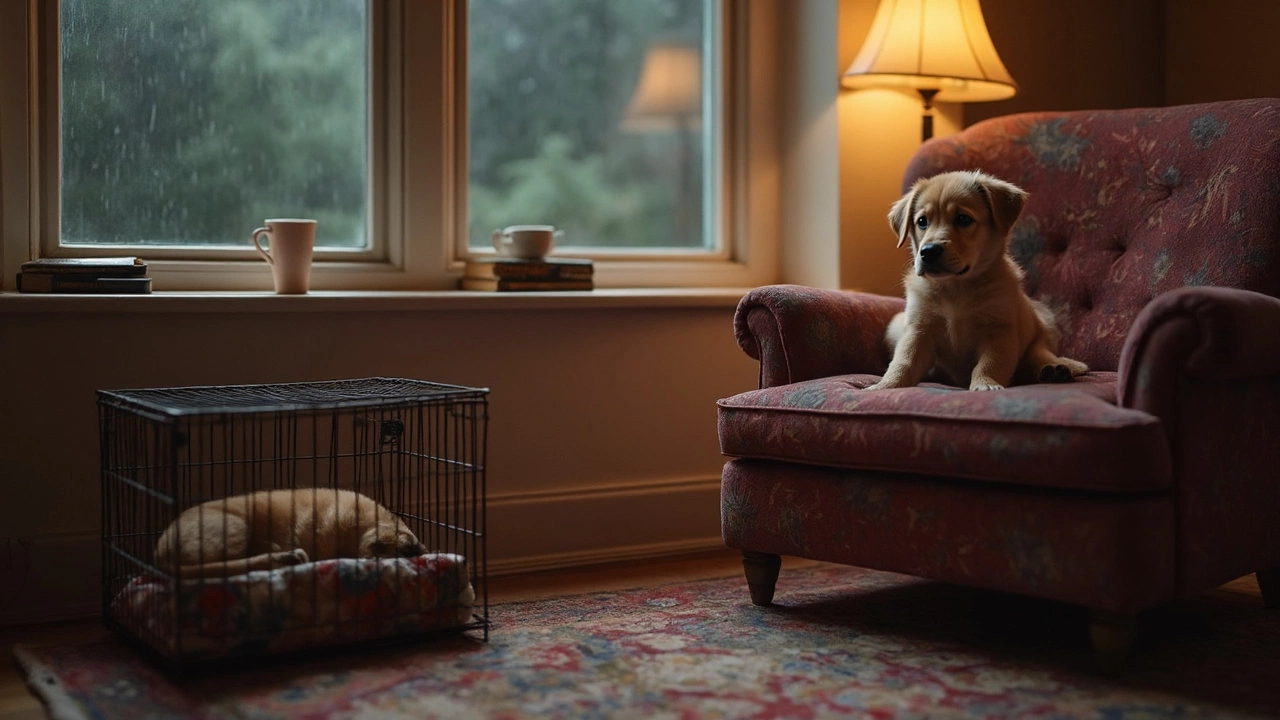Puppy Sleep Tips: Simple Steps for Better Nights
Got a new puppy that keeps you up with endless whines and bathroom trips? You’re not alone. Most owners hit a rough patch during the first few weeks of sleep training. The good news is that a few easy habits can turn those sleepless evenings into calm, quiet nights.
Set a Consistent Bedtime Routine
Dogs thrive on routine, so pick a bedtime and stick to it every night. A short pre‑sleep ritual—like a gentle brush, a calm cuddle, and a quiet command such as "go to bed"—signals to your puppy that it’s time to wind down. Keep the lights dim and the house quiet for the last 10‑15 minutes. The routine doesn’t have to be fancy; just a predictable series of actions helps the pup’s internal clock settle.
Crate Training Made Friendly
A crate can be the safest sleep spot if you introduce it the right way. Start by placing the crate in a low‑traffic area and leaving the door open. Toss a comfy blanket and a favorite chew toy inside, then reward your puppy for going in on its own. When you’re ready for night‑time, feed the last meal right before placing the puppy in the crate. The scent of the blanket and the limited space make the crate feel like a den, which many puppies naturally prefer.
Don’t forget the bathroom schedule. Young puppies can’t hold their bladders for long—usually about an hour for every month of age. Aim for a final potty break right before the crate, then expect at least one more trip around 3‑4 am for an 8‑week‑old pup. Keep a light on and a simple cue ready so the walk stays calm and quick.
Comfort matters, too. A soft bed or a folded towel can make the crate feel cozier. Some owners add a ticking clock or a white‑noise machine to mask house sounds that might startle a sleeping puppy. A gentle scent, like a dab of lavender on the blanket (make sure it’s pet‑safe), can also soothe nervous pups.
Finally, watch your own energy level before bedtime. If you’re still playing rough or feeding high‑energy treats, your puppy will pick up that excitement. Switch to a low‑calorie snack, turn off the TV, and speak in a calm voice. A relaxed owner helps a relaxed puppy.
Stick with these tips for a week or two, and you’ll likely notice fewer nighttime whines and calmer sleep. Remember, every puppy is different—adjust the timing and comfort items until you find what works best for yours. With patience and consistency, peaceful nights are within reach for both you and your new furry friend.

Should a Puppy Sleep in a Crate? Simple Facts and Real-Life Tips
Ever wondered if your new puppy should sleep in a crate? This article breaks down the pros, the drawbacks, and the best approaches for crate training at night. Discover what actually works for comfort, house-training, and safety, plus some surprising facts from real dog owners. Find out what your puppy might prefer and how to avoid the most common mistakes. Get practical, no-nonsense tips whether you’re a first-time pup parent or still on the fence about crates.
View more